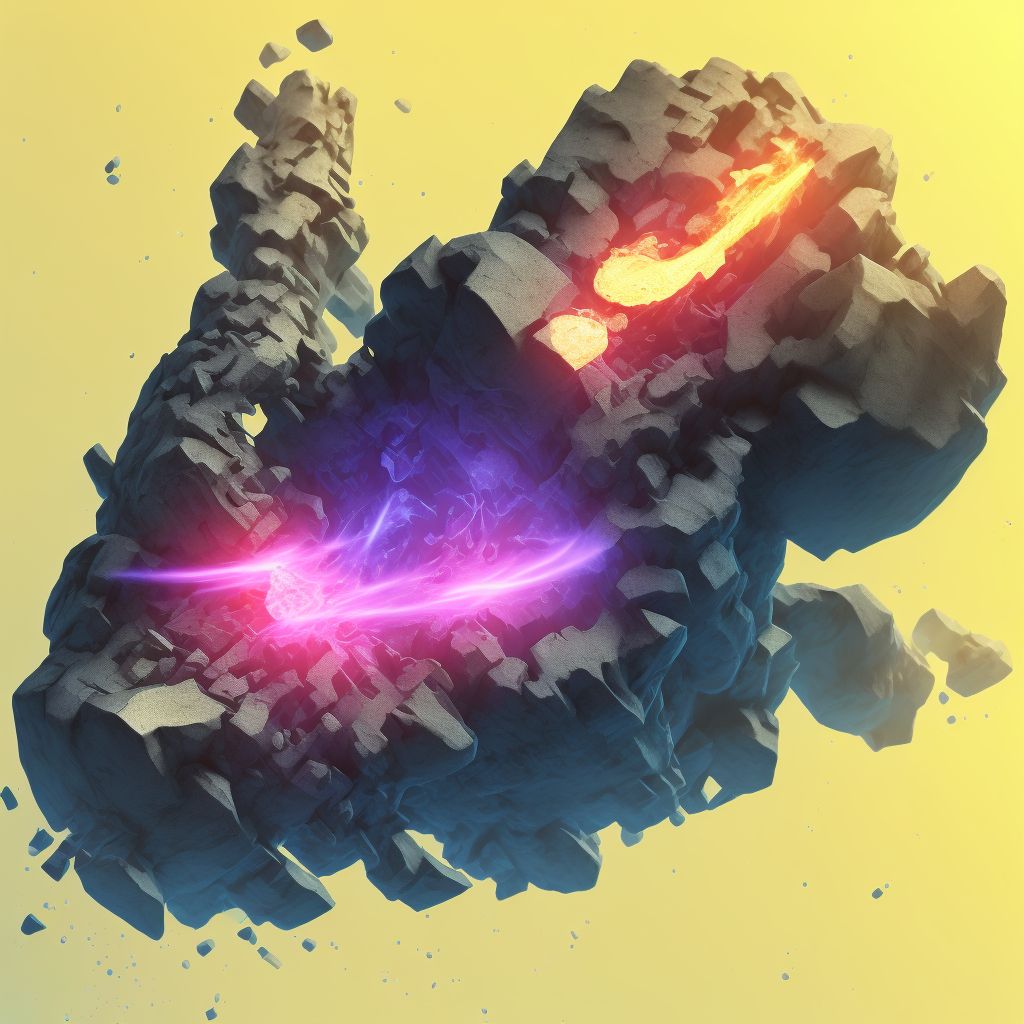
Nondisplaced comminuted fracture of shaft of unspecified tibia, subsequent encounter for closed fracture with delayed healing Save
ICD-10 code: S82.256G
Disease category: S82.256: Nondisplaced comminuted fracture of shaft of unspecified tibia
Nondisplaced Comminuted Fracture of Shaft of Unspecified Tibia: Understanding Subsequent Encounters for Closed Fracture with Delayed Healing
Fractures are common injuries that can occur due to various reasons, such as accidents, falls, or sports-related incidents. One specific type of fracture is a nondisplaced comminuted fracture of the shaft of an unspecified tibia. In this article, we will discuss subsequent encounters for closed fractures with delayed healing, excluding treatment options.
When a nondisplaced comminuted fracture of the shaft of the tibia occurs, it means that the bone has broken into several pieces but remains aligned and in its original position. A subsequent encounter refers to a visit to a healthcare provider after the initial diagnosis for further evaluation or monitoring of the healing progress.
Delayed healing is a common complication associated with fractures. It is characterized by a prolonged healing process, often taking longer than expected. However, it is important to note that delayed healing does not necessarily indicate a lack of progress or unsuccessful treatment. Each individual's healing process can vary, and patience is required.
During subsequent encounters for closed fractures with delayed healing, healthcare providers typically perform a comprehensive assessment to evaluate the progress of the fracture. This may involve physical examinations, imaging tests (such as X-rays or CT scans), and discussions about the patient's symptoms and overall well-being.
Healthcare providers may also provide guidance on supportive measures to aid the healing process. These measures can include recommendations for weight-bearing restrictions, the use of assistive devices (such as crutches or braces), and lifestyle modifications to promote bone health.
- Resting: Giving the affected limb adequate rest is crucial for healing.
- Elevating: Elevating the leg can help reduce swelling and improve blood circulation.
- Managing pain: Over-the-counter pain relievers or prescribed medications may be suggested to alleviate discomfort.
- Healthy diet: A well-balanced diet rich in vitamins and minerals can support bone healing.
It is essential to follow the healthcare provider's instructions and attend subsequent encounters to ensure proper healing. These follow-up visits allow healthcare professionals to monitor the progress, address any concerns, and make adjustments to the treatment plan if necessary.
In conclusion, a nondisplaced comminuted fracture of the shaft of an unspecified tibia can result in subsequent encounters for closed fractures with delayed healing. These encounters involve ongoing assessments and supportive measures to aid the healing process. Remember, it is crucial to consult with a healthcare provider for personalized advice and guidance regarding your specific situation.
Treatment of Nondisplaced comminuted fracture of shaft of unspecified tibia, subsequent encounter for closed fracture with delayed healing:
Treatment Options for Nondisplaced Comminuted Fracture of Shaft of Unspecified Tibia
A nondisplaced comminuted fracture of the shaft of the tibia can be a challenging injury to treat. This type of fracture occurs when the bone breaks into several pieces but remains aligned. It is essential to explore treatment options that promote healing and ensure a successful recovery.